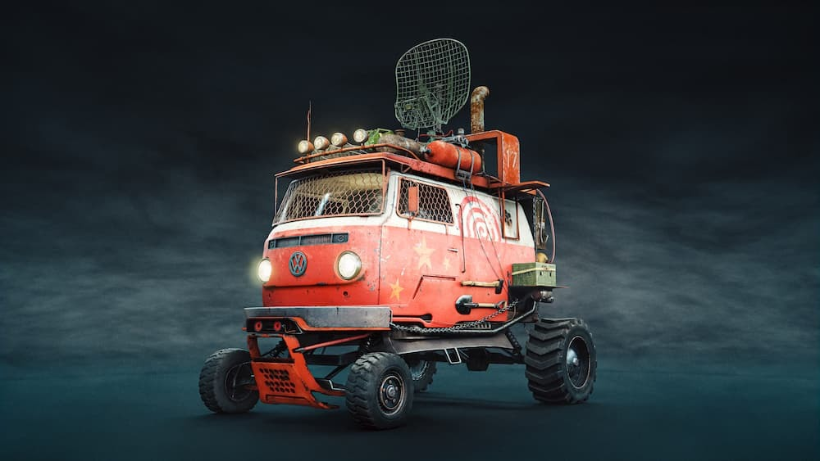Introduction
When it comes to 3D art, details matter. Lighting, modeling, and animation are important, but textures often bring the scene to life. Mastering texturing Blender models is key if you want photorealistic results. This post explores simple yet powerful tips you can use to take your Blender projects to the next level.
Why Texturing in Blender Matters
Textures make objects feel real. A plain model looks flat and dull. With the right textures, it gains depth, detail, and personality. Whether you are working on a game asset, an animation, or a still render, texturing Blender models will help you stand out.

Start with Clean UV Mapping
Good texturing begins with UV mapping. In Blender, UV maps tell your textures where to go on a model.
- First, unwrap your model properly.
- Avoid stretching and overlapping.
- Use Blender’s Smart UV Project for quick fixes, but learn manual unwrapping for full control.
Without clean UVs, even the best texture will look wrong. So spend time here. It will save you many problems later.
Use High-Quality Textures
Another tip is to use textures with high resolution. Low-res textures break the illusion. Surfaces become blurry and unrealistic.
Look for textures that are:
- Seamless, so they tile smoothly.
- High resolution, usually 2K or 4K.
- Physically accurate, like PBR (Physically Based Rendering) maps.
Websites like Poly Haven or ambientCG offer free resources. Apply them in Blender and tweak as needed.
Work with PBR Materials
PBR is a standard in the 3D industry. Blender supports PBR shaders through the Principled BSDF node.
Key maps include:
- Albedo (Color): Defines the surface color.
- Roughness: Controls glossiness.
- Normal or Bump: Adds fine details.
- Metallic: Defines metal surfaces.
Using these maps together in Blender gives a natural look. PBR makes texturing Blender models easier and more consistent.
Mix Procedural and Image Textures
Blender is strong in procedural texturing. You can create materials without images. For example, you can design wood, stone, or fabric using nodes.
However, image textures add realism because they are based on real surfaces. The best approach is a mix of both. For instance, start with an image texture, then add procedural noise for extra detail. This blend makes surfaces feel alive.
Use Normal and Bump Maps
Flat models can still look rich with the right maps. Normal and bump maps fake surface depth without heavy geometry.
- Normal maps simulate fine lighting changes.
- Bump maps affect shading by altering pixel depth.
Adding them in Blender gives your model realistic roughness. From tiny scratches on metal to grooves in stone, these maps push realism forward.
Add Roughness Variation
Real surfaces are rarely uniform. Wood has scratches. Metal has smudges. Skin has pores. You can achieve this by adding variation to the roughness map.
In Blender, use noise textures or mix multiple maps. Adjust the strength until it feels subtle. Too much will look fake, so keep it balanced.
Use Subsurface Scattering (SSS)
For skin, wax, or leaves, SSS is vital. It lets light scatter inside the object. Without it, skin looks plastic. With it, skin glows in a natural way under light.
Blender’s Principled BSDF node has a Subsurface option. Start with low values and test in different lighting conditions. This small tweak can bring life to organic models.
Pay Attention to Scale
Textures must match the real-world size of objects. If the wood grain on a chair is too large, it looks odd. Use Blender’s UV scaling tools to fix this.
Tip: Always compare with real references. Photorealism depends on matching scale.
Lighting and Rendering
Even perfect textures can look bad under poor lighting. Use HDRI environments to light your Blender scene. This adds natural reflections and soft shadows.
For final renders, switch to Cycles. It handles realistic light and texture interaction better than Eevee. Use denoising for clean results.
Practice with Small Projects
Learning texturing Blender models takes practice. Start small. Texture a cup, a chair, or a rock. Focus on details. Then, move on to complex characters or environments. Step by step, you will build skill and speed.
>>> Read more: The Ultimate Blender 3D Rendering Workflow: From Scene to Final Image
Common Mistakes to Avoid
- Overusing glossy surfaces. Real objects are rarely that shiny.
- Ignoring seams in UV maps. They will show up in renders.
- Forgetting to adjust scale. Wrong scale breaks immersion.
- Using low-quality textures. Always aim for sharp detail.
Avoiding these mistakes saves time and keeps your renders professional.
Advanced Tips for Realism
- Layering: Combine dirt maps, scratches, and decals for added story.
- Edge Wear: Use curvature maps to simulate worn edges.
- Displacement Maps: When needed, add true geometry depth. Blender’s Adaptive Subdivision works well for this.
These tricks give your model personality. It feels lived-in, not just computer-generated.
Final Words on Texturing Blender Models
Realistic 3D art is about balance. Modeling builds the base. Lighting sets the mood. But texturing Blender models brings them to life. From UV mapping to roughness variation, every step counts.
If you want photorealistic results, focus on detail. Use high-quality maps. Add variation. And always compare with real-world references. With time, you will see huge improvements in your work.
Render Smarter with 3S Cloud Render Farm
Once your textures are set, rendering is the last step. High-quality renders take power and time. This is where 3S Cloud Render Farm helps. With fast and affordable GPU servers, you can render Blender projects in the cloud without slowing your PC. This saves time and lets you focus on art.